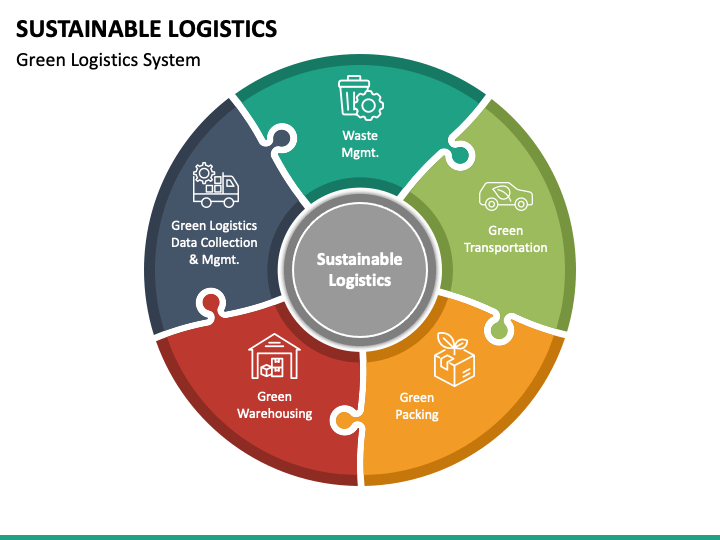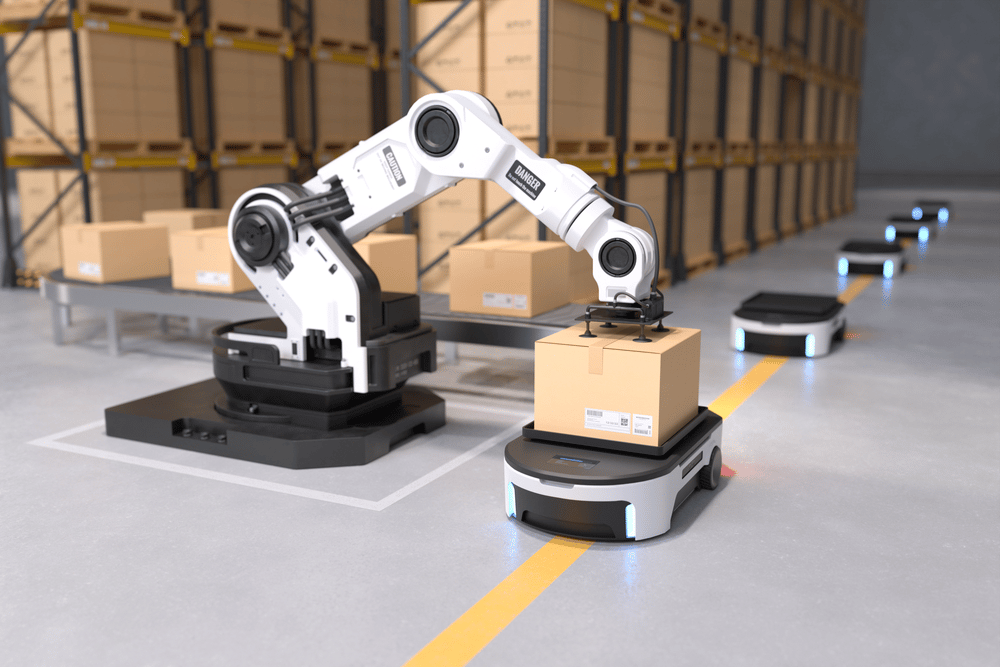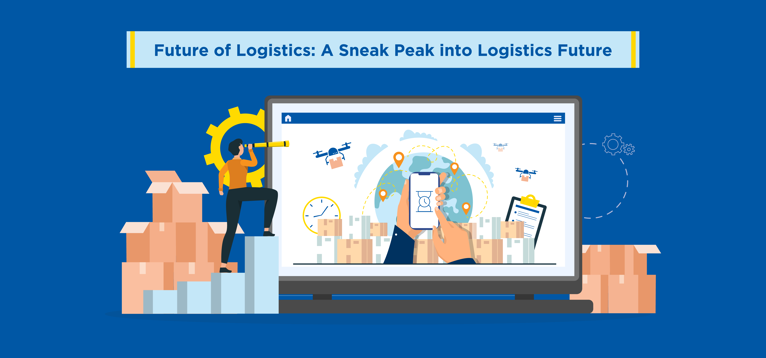The logistics industry has been driven by technological disruptions for a while now.
The industry has come a long way from the traditional logistics supply chain where manual labour had the upper hand and inventory management was more of a guessing game as opposed to being backed with real-time data.
But the drive for innovation is just getting started. Technology plays a central role in the future of logistics.
However, with changing consumer expectations, volatile freight rates, and increased focus on sustainability, freight service providers now have different priorities to adhere to.
The future trend in logistics takes into consideration the ongoing challenges and implementing technology at the right places to overcome them.
Let’s take a look at some of the top factors that play a pivotal role in the future of logistics.
1. Sustainability

Although a lot of industries are embracing sustainable practices, the burden of leading the troop falls on the logistics industry. It shouldn’t come as a surprise that logistics in particular can make a substantial impact on saving greenhouse gas emissions.
As an industry, it’s responsible for 5.5% of all CO2 emissions worldwide. It calls for an urgent need for logistics companies to resort to eco-friendly practices wherever they can. There are several ways that the industry will likely adopt. For example, they can use electric trucks for last-mile deliveries, and bio-fuel for long-distance transport with heavy trucks.
The choice of fuel and the development of sustainable technologies will play a major role in reducing carbon emissions. Retailers and other industries that rely on the logistics industry have made strong ESG (environmental, social, and governance) commitments in the coming years.
Other areas of focus are reducing the product’s waste, using recycled materials in product packaging, and following environmental protocols to reduce emissions and optimise routes.
2. Demand for Real-time Data
Inventory management is no longer based on assumptions. They’re linked to changing customer preferences and demand forecasts to ensure the accuracy of stock units.
The latest inventory management systems are focusing on sourcing data from previous buying habits and demand predictions. Based on the respective data, the logistic companies can draw conclusions from the past and provide an accurate forecast for the future.
The future trend of logistics demands big data results and the networking of market participants to stabilise the supply chain and anticipate failures. Using real-time data, logistics companies are developing alternative plans for transportation or sourcing or releasing inventories to meet specified schedules. There is also software that determines the best routes for delivery based on historical data.
Some of the top data sources that will shape the future of logistics include:
- Weather and traffic forecasts
- Location information
- Vehicle diagnostics
- Economic developments
- Consumer purchase data
- Supply forecasts
Real-time data will significantly aid the industry to minimise risks that are persistent in the logistics industry. It will also increase the transparency between different entities in the industry.
3. Multichannel
Freight service providers will diversify their logistics channels. A multi-channel supply chain refers to a flexible supply chain that makes room for expansion and optimised routes. Intermodal transit methods are becoming popular because of the risks associated with the single-channel supply chain.
A multichannel supply chain also includes multi-fulfilment centres. Diversifying the centres and transportation modes also speeds up delivery and reduces shipping costs. It helps mitigate the risks associated with unexpected closures of warehouses or disruptions due to bad weather.
A multichannel works best for eCommerce companies. It helps them establish diversified sales channels and distribution locations. It ultimately leads to more customers and meeting customer expectations. It also allows them to establish eCommerce order fulfilment centres closer to delivery zones.
If there are difficulties in a particular transport mode, this method allows logistics companies to switch to an alternative mode easily. It helps them reduce the risk of unexpected delays and maintain the stability of the supply chain.
4. High Demand for LTL
Before eCommerce emerged as a disruptive industry with a full-fledged supply chain like it has today, the logistics industry largely dealt with full truckloads (FTL) and large shipments. But in the current online shopping framework, logistics companies are required to make smaller shipments for which they opt for less than truckload (LTL) services.
Online shopping brands commit fast deliveries and hence, they don’t have the time to wait until the entire carrier is full. To make optimised use of space and fuel, logistics companies place multiple orders from various brands in one carrier. It poses various benefits for
- Small businesses that have limited sales and limited capital to hire full truckload services.
- E-commerce companies that rely on instant deliveries and have to act quickly as soon as the customers place their orders. They usually don’t have enough orders at a given moment to fill entire carriers.
The LTL method also has obvious cost benefits. Clients also only have to pay for limited space and companies can still fill the entire carriers, making optimised use of time and money.
And since the future of logistics is all about sustainability, this method supports that too. LTL also reduces the impact on the environment. There are only fewer carriers and trips that are needed to deliver products, lowering emissions.
5. Robotisation and Automation
The logistics industry has already filled inefficiency gaps with robotics and automation. Examples include stacker cranes, pallet shuttles, conveyors, etc to ease the movement of goods and improve warehouse management.
Picking systems typically involve a robotic arm with sensors that determine the shape and structure before grasping it. The advanced conveyor systems use scanners that can pick up bar codes to determine appropriate action.

But as future logistics technology progresses, robots will be increasingly used for gathering goods for incoming orders, calculating the fastest routes beforehand, and efficiently preparing the consignments, until the next robot takes over.
We will also witness the use of exoskeletons that augment human motion with mechanical power. The systems feature electric motors that enhance the person’s own strength to allow them to move more goods easily and safely.
There is also a rise in leveraging digital helpers for deliveries. Last-mile deliveries are also the most expensive and time-consuming part of the shipping process. As a result, giants like Amazon started toying with the idea of unmanned air vehicles (UAV) that uses autonomous drones by GPS systems to fulfil delivery requirements.
6. End-to-end Visibility
As the world moves toward higher interconnectedness, it is ideal for parties in the supply chain to work together as a single unit. If transparency and end-to-end visibility weren’t a necessity before, it is now. Entities in the supply chain can no longer afford to work differently.
The companies experience countless moving parts daily. One way logistics companies are ensuring real-time visibility is through integrating EDI (Electronic Data Exchange) and APIs (Application Programming Interface).
API integrations give a deeper understanding of B2B integrations within the digital framework while EDI helps you start and orchestrate business processes. When used together, they provide a comprehensive view of the entire supply chain.
It’s helping logistics companies to improve productivity, grow revenue, leave less room for errors, and have more control over processes.
7. Increased Adoption of Logistics Software-as-a-service (SaaS) Platforms
Since we talked about the B2B digital ecosystem, we need to mention the rise of SaaS in logistics that is transforming the supply chain. Logistics SaaS platforms are allowing businesses to outsource their logistics needs. It's helping them reduce costs, improve efficiency, and achieve greater returns on investment.
The ongoing development and distribution of new cloud-based systems and integrations are paving the way for logistics companies to streamline their workflows and improve interconnectivity through quick and secure information sharing.
They provide data-driven insights by tracking and monitoring the movement of goods. It aids companies in optimising the supply chains and improving their operations. The tools also enhance efficiency by carrying out mundane tasks and reducing manual errors.
Freight forwarding platforms allow carriers to connect with suppliers. As a result, the shippers enjoy competitive rates and the carriers can receive quicker payments.
What makes the logistics SaaS platform appealing is its cost advantage. Most technologies in logistics require a hefty investment. Logistics SaaS platforms provide a breather since comparatively, they’re easy on the pocket.
Some other benefits include:
- Scalability
- Customisation
- Instant deployment
- Accessibility
Finishing Thoughts
The outlook of the logistics industry today is very different from the one ten years ago. But a common connecting factor is that we can rely on technology to up its game with each year. Disruptions in the logistics industry are a given. But logistics companies will have to learn how to navigate through them in a way that reduces their costs.
All in all, the future of logistics looks complex but with the right aid, you can continue to thrive. PACK & SEND is your go-to stop for all things logistics. If you want to have a practical overview of how modern tech is integrated into the freight industry, you can get in touch with us and we’d be happy to guide you through.
Image Sources: Sketchbubble, Igps,
